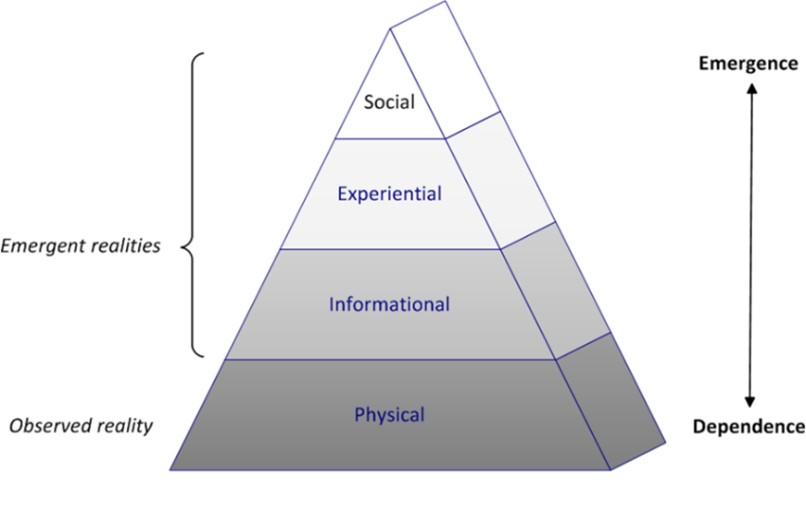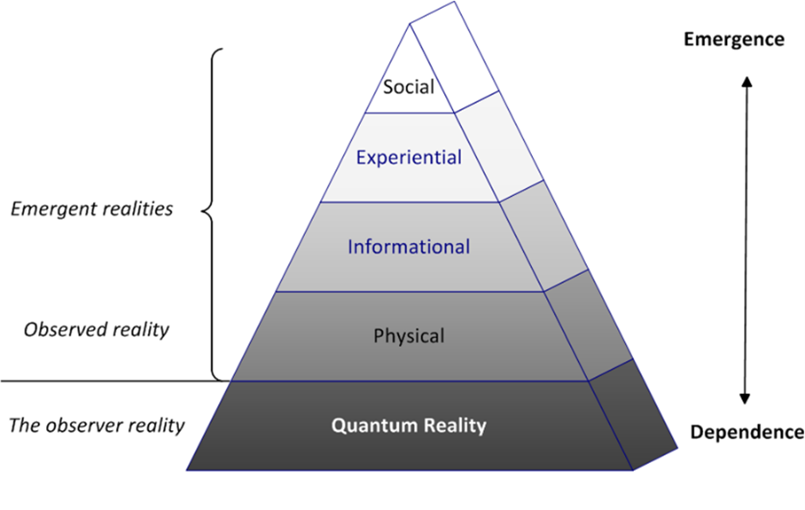What is real? Consider the following case:
“In June 2005, QiuChengwei, a Chinese national, won a virtual sword in the online game Legend of Mir 3. He lent the sword to a fellow gamer Zhu Caoyuan who subsequently sold it [on eBay]. When Qiu reported the incident to the police, he was told a virtual sword was not real property and was not protected by law. Qiu went to the home of Zhu and stabbed him to death in a very real crime for which he is now serving a life sentence.” (Power, 2010), p188.
The Mir sword didn’t physically exist but it was real enough for people to own, sell, and kill for, so for all practical purposes, it was real. Bitcoins don’t physically exist either but they have real effects. If we limit reality to what exists physically, then bitcoins worth billions of dollars aren’t real! Clearly that isn’t right, so let us define reality as what exists to an observer.
Adding the observer to the definition works if quantum theory is correct, that every physical event has an observer. This definition lets a dream to be real to a dreamer but not to others. It isn’t solipsism, that we create all reality, but that we each construct our own reality. This lets disciplines like sociology, psychology, and computing study social, experiential, and information systems that are real. For if information wasn’t real, or if cognition wasn’t real, or if society wasn’t real, the sciences of computing, psychology, and sociology would be the study of unreality. It also lets scientists study computers in informational, experiential, and social terms (Whitworth & Ahmad, 2013).

In Figure 1.5, the observations of science emerge from physical events, so an engineer can see a cell phone as hardware while a programmer sees it as software. There is one reality, the phone, but engineers and programmers can view it differently. We can see hardware to solve a hardware problem, or software to solve a software problem.
Thus, hardware can exist without software but software can’t exist without hardware, because it emerges from it. In general, social structures emerged from human experiences (Bone, 2005) that emerged from nerve information that emerged from brain events because seeing reality in social terms helped us survive (Hogg, 1990). Science is based on observations that can change with the subject.
The Mir sword didn’t exist physically but it was an information entity in the Mir database, a cognitive entity experienced by its owner, and a social entity in the Mir community, so it was real in these terms. If a fantasy is real to only one person, the Mir sword was not that. It existed by common consent and was even a scientific subject of research. In a society, to sell what one doesn’t own is unjust, so as the police had no remedy, the owner took justice into his own hands.
In Figure 1.5, a group or nation isn’t a thing, it is an observation of shared experiences. An experience isn’t a thing, it is an observation of brain information. And information isn’t a thing, it is a way of observing physical events. Current physics makes matter the basis of all reality views but virtualism questions this assumption, by suggesting that a thing isn’t a thing either, just a view of quantum reality.
Quantum realism argues that all reality derives from quantum reality as a view. As the great eighteenth century philosopher Kant concluded, we only ever see phenomena, views of reality, not noumena, or reality itself (Kant, 2002). In Figure 1.6, physical reality emerges from quantum reality, so it exists when we look but not when we don’t.

Our observer-observed reality isn’t objectively real, but is a world based on images necessarily fake? Imagine looking at yourself in a mirror. You see your body in the mirror but if you don’t look, the image doesn’t exist. It is objectively unreal, because nothing exists where the image apparently is, but we take it as real because it shows us how we look. It follows that an image that reflects reality isn’t fake, even if it doesn’t exist objectively.
If images that reflect reality aren’t fake, a virtual world isn’t fake if it reflects real quantum causes, so this world isn’t a movie made-up, or a dream imagined, but a reflection of quantum reality.
Quantum reality is the base of Figure 1.6 because it provides the observer. Each reality level leads to the next, just as in Figure 1.5, but now the base is quantum not physical. Physical events emerge from quantum events just as information emerges from physical events. It follows that we live in a local reality (1.2.6) not a fake one, where what we see, like the Mir sword, is locally real but not objectively so.